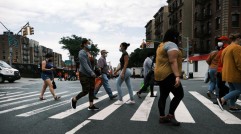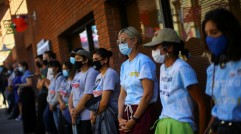Little Kids React to Fashion Campaigns [Watch]
Kids say the darndest things, but when it comes to fashion campaigns, they may have a point.
Spanish visual artist, Yolanda Domínguez, asked children in Spain what they thought about some of today's biggest fashion campaigns from brands like Balmain, Hugo Boss and Dolce & Gabbana.
While the comments are hilarious, because of the way children phrase things, they also point out some serious issues in the differences in the representation of women and men in the media.
"Kids decoded the images and exposed the implicit violence and inequality when it comes to the way women and men are treated in these editorials," Domínguez told It's Nice That. "They often offered themselves to help women ... while they projected their dreams and ambitions on to the men's roles."
"She seems scared" and "Maybe she's drunk" were comments the children made about the Loewe's ad featuring a model sitting on the ground while shielding her face. "She feels alone and is hungry," another said.
"Either they are helping her or they are abusing her," one boy said about a Pepe Jeans ad that features model Cara Delevingne in a garbage can while being held by two male models.
According to Yahoo Style, most of the campaigns featuring women received negative comments from the children while those featuring men were more positive and even projected positive ideas to the kids.
Balmain's Spring/Summer 2015 ad, featuring models like Adriana Lima and Joan Smalls, received comments like "a lot of ladies fighting each other" and "They're mean girls, and the other girls are trying to stop them and call the police."
Hugo Boss' campaign received positive comments with kids calling them "heroes or super agents," and so did Dolce & Gabbana's campaign, which kids believed to be about their careers and how they seemed happy.
"This revealing document poses many questions about hidden messages that are launched by the fashion industry," Domínguez said. "Why do we link these kinds of images with glamour and luxury? Why doesn't anybody denounce this situation? How do these images influence our visual education?"
Check out Domínguez's video below.
Subscribe to Latin Post!
Sign up for our free newsletter for the Latest coverage!
* This is a contributed article and this content does not necessarily represent the views of latinpost.com














